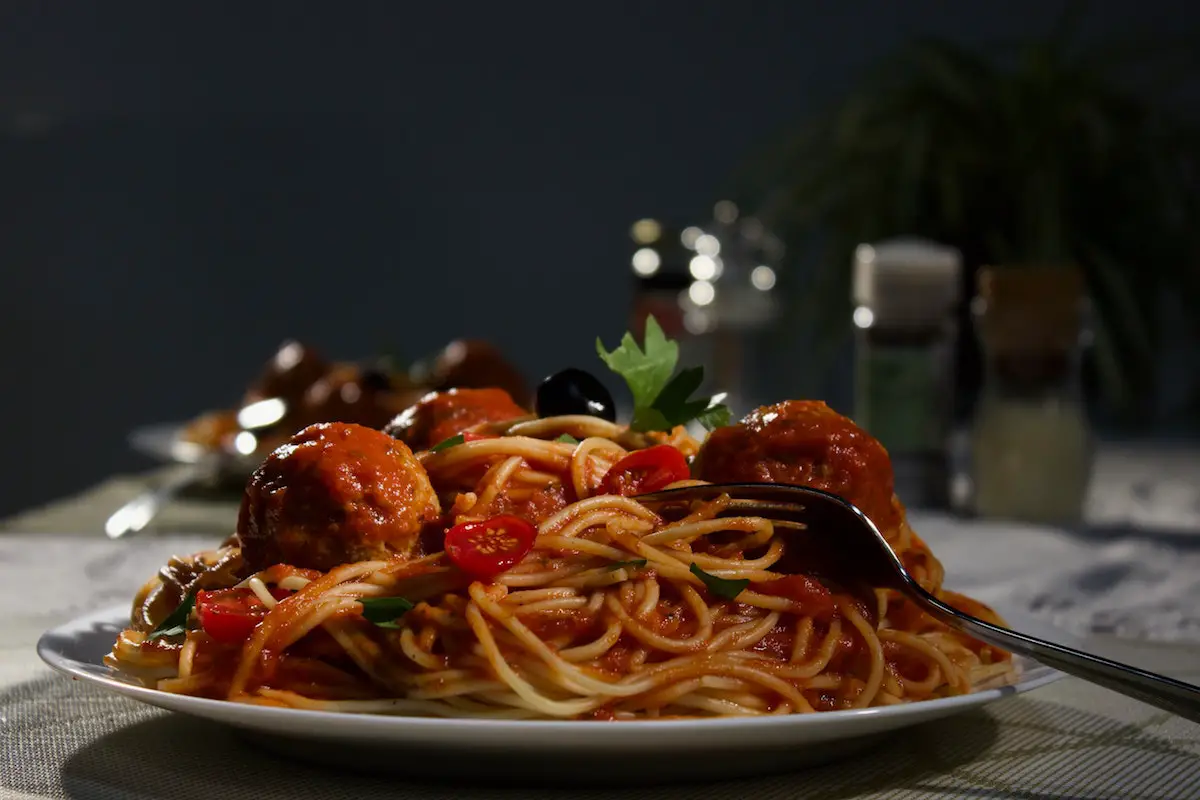Nominated-Day or Next-Day
Nominated-Day or Next-Day

If you’ve left spaghetti out overnight, its not a good idea to eat it. If spaghetti is left out in temperatures higher than 40°F for longer than a couple of hours, it is possible that the growth of bacteria has already started and can cause food poisoning when you eat the spaghetti.
I’ve done it before and had the experience of taking the time to cook a lovely homemade spaghetti dish, left it to sit on the counter, and forgetting to put it away before bed. Then I woke up, grabbed my morning coffee, saw it sitting there, and thought: I am so stupid because it just has to be thrown in the trash!
It is best to throw away leftover spaghetti when it’s cooled and then stay at room temperature. There’s a reason we put things in the fridge! However, even though this might be your goal but it’s easy not to remember to do so, and then you’re stuck in the morning wondering whether the spaghetti is safe to consume or not.
Just remember you aren’t the only one. I’ve left many things out overnight and have shared my guidance here, from boiled eggs, cheesecake, and even regular eggs! Slightly embarrassing as an ex-chef, but here, we all make mistakes!
The safe zone for food products in which it must be kept at a temperature below 40 degrees F to stop the growth of bacteria or to reduce it.
If spaghetti is left at or over the temperature for too long, it is an increased chance of the food acquiring an increase in bacteria, which can then pass on a foodborne disease if consumed.
If you’ve left spaghetti out overnight, there’s a good possibility that it was kept out at temperatures above 40 degrees F, and you’re at risk of getting sick.
The same applies if you leave pasta out overnight and most other carbohydrates.
When you’re hungry and don’t want to waste food, there are a few indications to determine whether your spaghetti is spoiling or not:
Find out whether the pasta is odorless. If you detect any foul or other odors, the pasta should be thrown away, and you should avoid eating the food.
Spaghetti that is beginning to spoil will change into an entirely different color. Fresh spaghetti has an orange-golden color. As it loses its color, it will appear less vibrant and more light in the shade.
As it degrades, it’ll appear almost white or grey, indicating that it is time to throw it out immediately.
Fresh spaghetti is supposed to be firm, soft, and slightly tender. If it’s been left out too long and begins to get spoiled, it will turn slimy and extremely chewy.
Try squeezing your spaghetti with your fingertips to test the texture.
Here are a few varieties of spaghetti dishes you could have cooked at home and left out overnight.
We’ve looked over each and determined if they’re safe to take in (keep in mind that there is always a risk of eating spaghetti left in the fridge overnight, and you must be looking for signs of spoilage before eating any).

Since spaghetti seasoned with meat sauce has meat prone to become rancid and to increase the growth of bacteria, it is best to dispose of it when left out for a long time and avoid eating it.
There is too much chance that the meat sauce may not be safe.
Marina sauce has high levels of tomato, which can be acidic. It is important to evaluate the sauce the following day to determine whether it is beginning to turn rancid or has begun to spoil and whether the acidity has increased.
To avoid harm, it is advised not to eat spaghetti with marinara sauce that was left out overnight.
Alfredo sauce created using dairy ingredients means that it shouldn’t be kept out at temperatures below room temperature.
Dairy products are prone to spoiling very quickly at room temperature, and it’s not worth having spaghetti and Alfredo sauce that was left out for a long time.
However, spaghetti with butter may be fine to eat the next day, but you’ll need to sniff the spaghetti to be sure the butter isn’t beginning to turn rancid. It should be possible to detect this smell easily.
Spaghetti cooked with olive oil is safe for eating the next day if it is left out for a few hours and if there isn’t any off odor or discoloration or changes to the consistency of spaghetti.
Spaghetti left out could go rotten in just 2 hours. This is especially true for the spaghetti left to sit in the food-safety danger zone, which ranges from 40 to 140 deg F.
When the spaghetti has been cooked and cooled, the spaghetti should be put in an airtight container and kept in the refrigerator. This will prevent the spaghetti from getting rotten.
Leave a comment